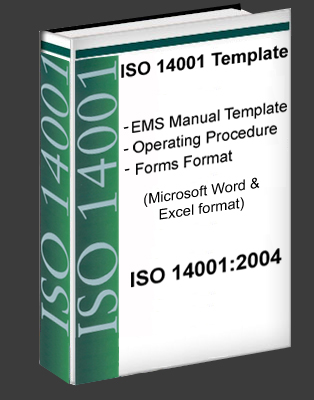Emergency Preparedness and Response In ISO 14001
Under the Emergency Preparedness and Response requirement of ISO 14001:2004 (§4.4.7), the organization is required to establish procedures for identifying the potential for and responding to emergency situations and accidents that can have an impact on the environment.
Identification of Potential Emergency and Accident Situations – Experience indicates that organizations infrequently have a preexisting procedure for identifying potential emergency and accident situations.
The norm is to establish emergency and accident responses for a variety of emergency and accident situations irrespective of the potential for their occurrence. But ISO 14001 is specific about requiring a procedure to identify the potential for emergency situations and accidents. Adhering to the requirement of the procedure is a valuable exercise that helps organizations identify weaknesses in their own emergency planning and to plan for that which is most likely to occur.
Because many environmental impacts of an emergency or accident situation are secondary in nature, it appears that all potential emergency or accident situations need to be identified before a determination of environmental impacts can be made. An organization that attempts to identify potential emergency or accident situations based on a review of its environmental aspects would likely miss the environmental impact potential of, say, an automobile accident.
There are five steps implied by the emergency preparedness and response requirement:
1) Identify the potential for emergency situations and accidents of all kinds;
2) Paying particular attention to the potential environmental impacts of accidents and emergency situations, identify how the organization can prevent and mitigate associated adverse environmental impacts;
3) Determine how the organization and its employees should respond to emergency situations and accidents;
4) Periodically simulate emergency situations to test response capabilities; and,
5) Review and revise procedures based on experience derived from actual and simulated emergency situations and accidents.
Accident and Emergency Situation Identification – In order to identify potential for and responding to emergency situations and accidents, the organization should develop a procedure for systematically identifying accident and emergency situations, evaluating their probability of occurrence, their likely consequences, and their severity.
Organizations often engage risk management specialists to assist in the identification of potential emergency or accident situations that could lead to human injury, environmental damage, or economic loss. While many checklists are available to facilitate this kind of evaluation, there is virtually no substitute for physical evaluation of facilities by knowledgeable personnel, whether employees or outside professionals.
Emergency Response Procedures – The organization is required to develop procedures for responding to emergency situations and accidents when they occur. Typically, response procedures include identifying public emergency response agencies and their capabilities, identifying individuals within the organization who are trained and able to provide assistance in emergencies, establishing an emergency communications network, and providing emergency lighting, signage, and equipment. Because Emergency Response Procedures are based on identified potential emergency situations and accidents specific to the organization, the emergency response plan will be unique for each organization.
Periodic Testing – The value of conducting emergency response exercises lies not only with simulating situations that could occur but also in identifying flaws in the response plan. Practice drills can be the most effective test of the system to give employees, emergency response personnel, and management the opportunity to walk through the plan and gain familiarity with its procedures. While a full-dress response exercise is valuable, testing of procedures can be effectively done on much smaller scales and still provide the benefits of testing. Above all, the organization should not let the impracticality of a full-dress exercise keep it from testing sub elements of the emergency response plan.
Review and Revise – ISO 14001 calls for continual improvement of the EMS. Periodically reviewing and revising emergency response plans based on the experience gained from the occurrence of emergency situations or accidents or in testing response plans is an example of continual improvement.
Written Response Plans – Many written emergency response plans are too cumbersome to be of value in an emergency situation – their value depends entirely upon previous training of persons who will be called upon to execute them. Yet, many organizations fail to provide the emergency response training necessary to make the plans functional.
Keeping in mind that even the simplest, most direct emergency response plan requires training for effective implementation, an alternative for organizations to consider is establishment of abbreviated, readily available Immediate Response Directions established for each kind of potential emergency situation or accident. Such an emergency response plan might consist of a laminated card prepared for each potential emergency situation or accident and providing specific responsibilities and associated actions for employees and visitors, supervisors, emergency coordinators, and emergency directors.

